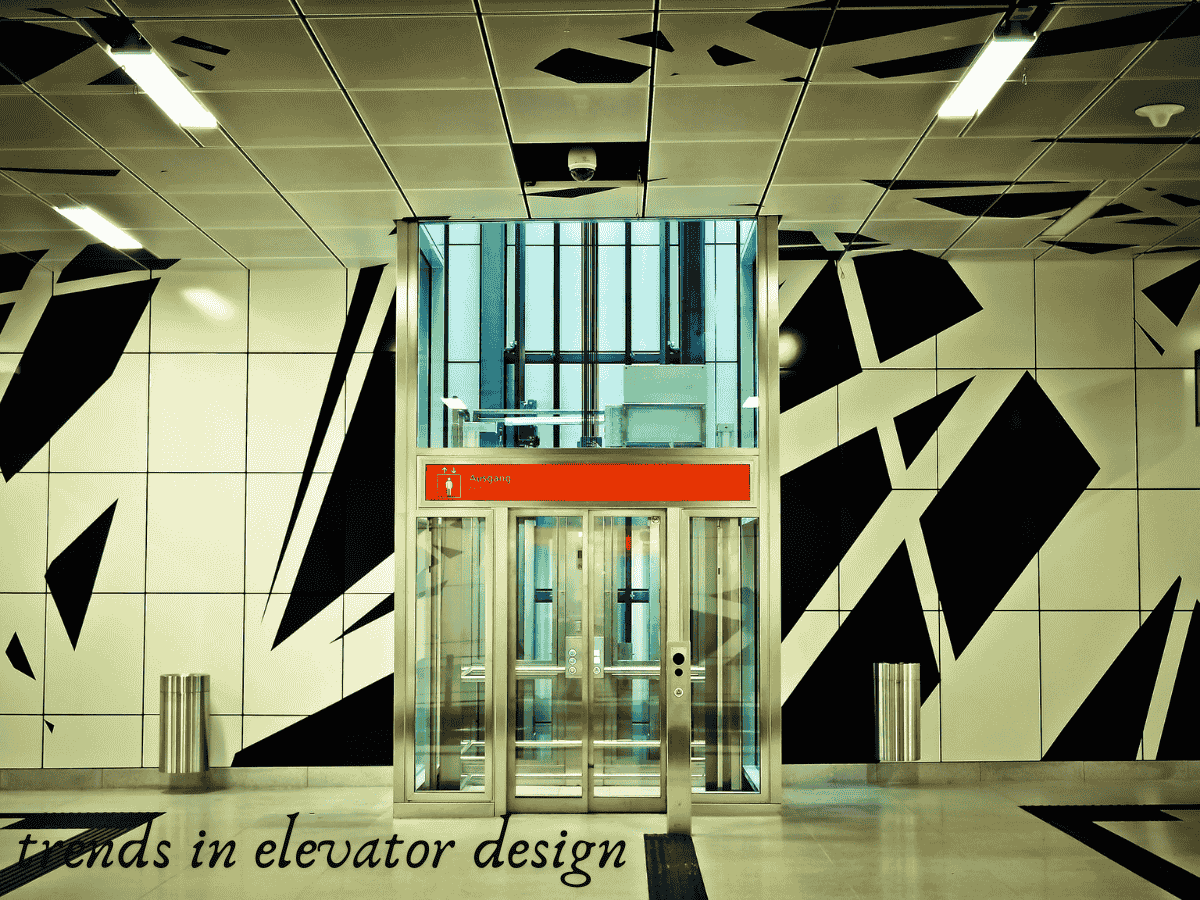Rising the Future: 2025 Trends in Elevator Design

In our vertical environments, elevators are absolutely essential and subtly shape our movement within buildings. Still, their influence transcends mere utility. Modern elevator design combines aesthetic appeal with state-of- the-art technologies to improve user experience by means of form and function.
Trends in elevator design mirror changing demands as buildings get smarter and sustainability takes front stage worldwide. Whether your job is building management looking for efficiency, architect designing the next skyscraper, or urban planner maximizing mobility, keeping ahead depends on knowing present elevator design trends.
From environmentally friendly designs and cutting-edge elevator technology to breathtaking modern interiors, here we will walk you through the main trends altering elevators.
Changing Elevator Design Patterns
Eco-Friendly and Sustainable Elevator Design
Elevators are not an exception; sustainability has become a top issue for many different sectors. Green elevators are intended to decrease energy usage utilizing regenerative motors that send energy back into the building’s grid. Further improving energy economy are LED lights and standby modes.
Additionally, sustainable materials like recyclable metals and non-toxic coatings are being employed to lessen environmental effect while constructing visually appealing elevators.
Smart Elevators with Advanced Functionality
Smart elevators employ IoT technology to interact smoothly with current structures. Features like predictive maintenance, remote monitoring, and mobile applications for touchless operating boost efficiency and convenience.

For example, customers may now request elevators using cellphones, cutting wait times and boosting accessibility. The incorporation of AI enables these systems to predict demand and optimize travel, avoiding bottlenecks during peak hours.
AI and IoT Integration in Elevator Operations
Artificial Intelligence (AI) is playing a revolutionary role in elevator systems. AI-powered algorithms assist improve traffic flow based on building usage patterns, further improving destination dispatch systems.
The Internet of Things (IoT) takes this a step further by enabling real-time data exchange for better diagnosis. This connection helps prevent mechanical faults, resulting to safer and more dependable elevator journeys.
Accessibility and Inclusivity in Design
Elevators are a key element of the mobility equation, and accessibility is more than a trend it’s a fundamental right. Innovations like braille panels, voice-controlled devices, and larger doorways provide inclusiveness for all users, regardless of ability.
Trends in Elevator Cab Design Customization Options for Diverse Building Types
From luxury residential complexes to industrial structures, elevator cabs are designed to fit unique demands. Customization choices for size, colors, and materials provide architects and designers tremendous freedom in harmonizing elevator aesthetics with the building’s concept.
Focus on User Comfort and Efficiency
User experience is at the foundation of modern elevator design. Ergonomic handrails, anti-microbial coatings, and intentional ventilation systems promote comfort and safety for passengers.
Trending Materials and Finishes
Modern elevators utilize a variety of materials such as beautiful glass, stainless steel, composite panels, and natural stone to produce spectacular images. Matte and textured surfaces are developing as popular alternatives for sleek, modern appearances.
Noise Reduction and Smooth Operations
Innovations in mechanics have substantially enhanced ride quality. Advanced motor systems and precise gears offer quieter, vibration-free rides—an especially desirable characteristic in premium projects.
Elevator Technology: The Driving Force Behind Innovation
Emerging Elevator Mechanics
Elevator mechanics are witnessing amazing breakthroughs. Systems like MULTI by Thyssenkrupp replace conventional wires with magnetic levitation, allowing elevators to travel horizontally as well as vertically.
The Rise of Destination Dispatch Systems
Traditional push-button operation is being replaced by destination dispatch systems, which aggregate passengers headed to the same destination. This decreases travel time and energy consumption while optimizing journeys.
Autonomous and Touchless Elevator Systems
The transition toward touchless interfaces has quickened, with touchscreens being supplanted by mobile applications or gesture-based controllers. Voice-activated elevators are gaining acceptance, improving cleanliness and convenience.
The Role of 5G Connectivity
5G technology is likely to transform building automation systems, including elevators. High-speed connectivity offers real-time data interchange, enabling for better operations and informed decision-making.
Elevator Cab Interiors Trends
Minimalist and Sleek Interior Aesthetics
Less is more in contemporary elevator interiors. Minimalist designs with clean lines, neutral tones, and modest lighting convey elegance while complimenting modern architectural designs.
Integration of Lighting and Multimedia
Dynamic lighting and digital screens are bringing elevator interiors to a whole new level. Screens displaying weather updates, event schedules, or personalized messages offer an immersive experience for riders.
Premium Materials in Modern Elevator Interiors
Expect to see elevators embellished with glass walls for open vistas, stainless steel accents for a modern atmosphere, and natural stone for a touch of luxury.
Sustainable Interior Design Choices
Eco-conscious designs use repurposed materials and ecologically friendly finishes, providing a greener impact. Bamboo paneling, low-VOC paints, and repurposed metals are gaining popular.
Safety and Efficiency in Elevator Cab Design
Safety is a primary consideration in elevator design. Emerging developments include enhanced monitoring systems and AI-powered sensors that detect motion, weight, and abnormalities in real-time to avoid mishaps.
Space-saving designs are another feature, combining tiny motors and streamlined layouts to maximize elevator capacity without compromising operation or aesthetics.
2025 New Elevator Innovations: What’s Next?
Looking ahead, we see many interesting prospects for the elevator sector in 2025 and beyond. Advanced carbon-fiber ropes, pneumatic systems, and biodegradable coatings are ready to make elevators lighter, quicker, and more sustainable.
Futuristic innovations like translucent or external-facing elevators will push the frontiers of inventiveness in building design. These elevators will convert everyday rides into stunning experiences, especially in high-rise buildings.
Frequently Asked Questions About Elevator Design
1. How might smart elevators aid building managers?
Smart elevators decrease maintenance costs, enhance traffic flow, and give insights through data analytics, making them an invaluable tool for modern buildings.
2. Are eco-friendly elevators more expensive?
While the initial expenditure may be costlier, eco-friendly elevators help save expenses over time through decreased energy usage and fewer maintenance.
3. What materials are fashionable in elevator cab interiors?
Glass, stainless steel, and natural stone are popular alternatives, combining durability with attractiveness. Recycled and repurposed materials are also gaining appeal.
4. How does AI enhance elevator operations?
AI improves traffic patterns, forecasts maintenance requirements, and promotes safety, assuring smooth, efficient operations.
Evolving Urban Mobility with Style and Function
Elevators are no longer simply about moving people they’re about transferring experiences. From clever functions to magnificent forms, elevator design trends in 2024 represent humanity’s urge to create, elevate, and incorporate.
Whether you're constructing a modern skyscraper or updating an ancient structure, being knowledgeable about these trends ensures your elevators aren't simply functional they're innovative.
Want to develop for the future? Align your designs with these trends and guarantee your ventures reach new heights.
Conclusion
Elevator technology continues to advance, concentrating on sustainability, efficiency, and user experience. By adopting energy-efficient technologies, combining modern materials, and using AI capabilities, elevators are becoming smarter and more dependable. These technologies not only enhance everyday operations but also contribute to long-term cost savings and environmental responsibility. As the industry advances, maintaining educated about new trends and technology enables maximum performance and a forward-thinking approach to elevator solutions.
